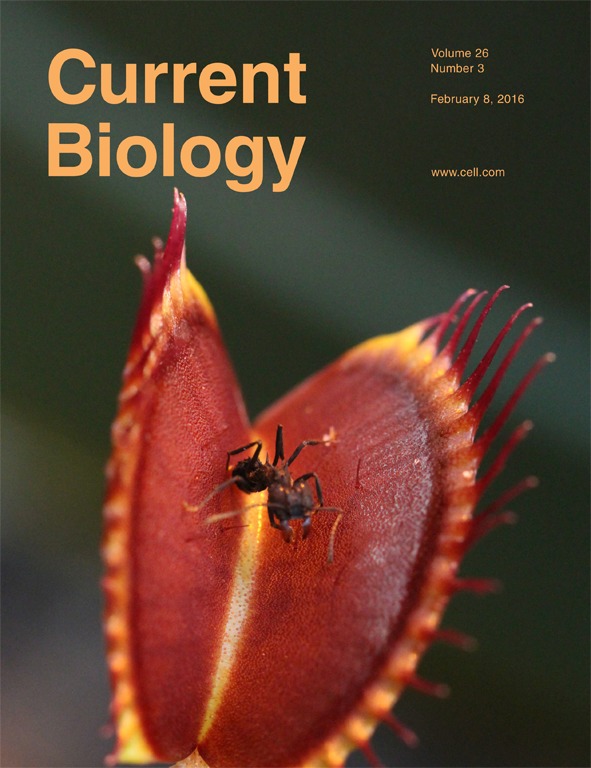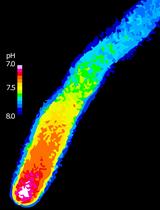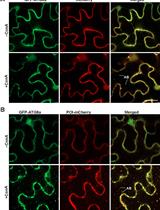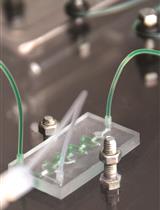- EN - English
- CN - 中文
Quantification of Starch in Guard Cells of Arabidopsis thaliana
定量测定拟南芥保卫细胞中的淀粉
发布: 2018年07月05日第8卷第13期 DOI: 10.21769/BioProtoc.2920 浏览次数: 10924
评审: María Victoria MartinAnonymous reviewer(s)
Abstract
In this protocol, we describe how to quantify starch in guard cells of Arabidopsis thaliana using the fluorophore propidium iodide and confocal laser scanning microscopy. This simple method enables monitoring, with unprecedented resolution, the dynamics of starch in guard cells.
Keywords: Starch (淀粉)Background
Starch is a complex polymer of glucose and represents the most abundant form in which plants store carbohydrate. Starch serves different functions, according to the cell types from which it is derived, and the external environmental conditions. In guard cells, which border the stomatal pores that control water and carbon dioxide exchange with the environment, starch can be mobilized within minutes upon transition to light, helping to generate organic acids and sugars to increase guard cell turgor and promote stomatal opening. In mesophyll cells, starch typically accumulates gradually during the day and is degraded at night to support metabolism (Santelia and Lunn, 2017).
Because guard cells comprise only a minor fraction of the total leaf, it is difficult to measure starch quantitatively using conventional methods. Up until now, starch accumulation in guard cells has been mostly visualized by iodine staining. This technique can determine the presence/absence of starch but does not provide accurate, quantitative information.
Here, we describe a fluorescence-based imaging method to quantify starch in guard cells of Arabidopsis thaliana. This technique is based on the covalent labeling of cell wall material and other glucan substrates, including starch, with the fluorescent pseudo-Schiff reagent propidium iodide (PS-PI). Isolated epidermal peels are treated with periodic acid to oxidize the hydroxyl groups of the glucose units to aldehyde and ketone groups. The aldehyde groups (-CHO) can then react covalently with propidium iodide, resulting in samples with highly fluorescent glucans that are well suited for confocal laser scanning microscopy. The area of single starch granules within guard cell chloroplasts can be determined using digital imaging. We applied this method to assess the dynamics of starch content in guard cells of intact Arabidopsis leaves over the diurnal cycle, and to determine the impact of fusicoccin (a chemical activator of the proton pump) on starch amounts in guard cells of isolated epidermal peels fragments floating in stomatal opening buffer (Horrer et al., 2016).
Our protocol is an adaptation of a previous mPS-PI staining technique (Truernit et al., 2008). The original method was developed to image entire plant organs for three-dimensional reconstruction of their cellular organization. The main difference between the two methods is the incubation time with the propidium iodide solution, which is 1-2 h for entire plant organs, and only about 20-40 min for epidermal peels.
The technique described here is simple, accurate and highly reproducible. By facilitating the detailed quantification of starch amounts in guard cells, this method will increase the number of questions we will be able to answer about any aspect of guard cell starch metabolism.
Materials and Reagents
- Pipette tips (SARSTEDT)
- 12-well plate (Greiner Bio One International, catalog number: 665180 )
- Falcon tubes
- Parafilm M (Bemis, catalog number: PM996 )
- Microscope slides (Thermo Fisher Scientific, Menzel-Gläser)
- Coverslips (Thermo Fisher Scientific, Menzel-Gläser)
- Kimtech Science precision wipes (KCWW, Kimberly-Clark, catalog number: 75512 )
- Square Petri dish (Greiner Bio One International, catalog number: 688102 )
- Arabidopsis thaliana ecotype Col-0
- Methanol (Carl Roth, catalog number: 8388.4 )
- Ethanol (Reuss Chemie, catalog number: RC-A15-A )
- Acetic acid
- Periodic acid (Sigma-Aldrich, catalog number: P7875 )
- Sodium metabisulfite (Sigma-Aldrich, catalog number: S9000 )
- Hydrochloric acid (Carl Roth, catalog number: 4625.1 )
- Propidium iodide (Sigma-Aldrich, catalog number: 81845 )
- Chloral hydrate (Sigma-Aldrich, catalog number: 15307-R )
- Glycerol (Carl Roth, catalog number: 3783.1 )
- Gum arabic (Carl Roth, catalog number: 4159.3 )
- Fixative solution (see Recipes)
- Schiff Reagent (see Recipes)
- Chloral hydrate solution (see Recipes)
- Hoyer’s solution (see Recipes)
Equipment
- Glass beaker
- Precision tweezers (RubisTech, catalog number: 5-SA RT )
- Pipettes (Gilson)
- Fume hood (Renggli AG)
- Refrigerator (Liebherr)
- Oven (Ehret)
- Green light LED lamp (In-house built)
- Confocal laser scanning microscope (Leica Microsystems, model: Leica TCS SP5 )
Note: This product has been discontinued. Any confocal laser scanning microscope can be used. - Computer
Software
- ImageJ (NIH USA, version 1.8, https://imagej.nih.gov/ij/)
Procedure
文章信息
版权信息
© 2018 The Authors; exclusive licensee Bio-protocol LLC.
如何引用
Flütsch, S., Distefano, L. and Santelia, D. (2018). Quantification of Starch in Guard Cells of Arabidopsis thaliana. Bio-protocol 8(13): e2920. DOI: 10.21769/BioProtoc.2920.
分类
植物科学 > 植物新陈代谢 > 糖类
细胞生物学 > 细胞成像 > 荧光
您对这篇实验方法有问题吗?
在此处发布您的问题,我们将邀请本文作者来回答。同时,我们会将您的问题发布到Bio-protocol Exchange,以便寻求社区成员的帮助。
Share
Bluesky
X
Copy link














